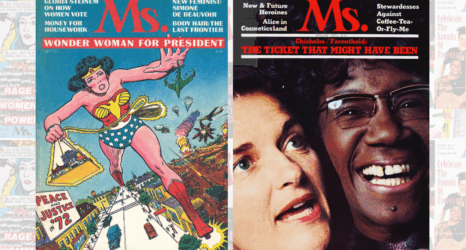Updated Tuesday, Oct. 18, at 9:15 a.m. PT.

The Biden administration announced this summer it would cancel significant amounts of student debt for millions of Americans, marking the largest discharge of education debt in U.S. history. Under the new plan, individual student loan borrowers earning under $125,000 per year (or $250,000 for households) qualify for up to $10,000 in loan forgiveness. Recipients of Pell Grants—subsidies limited to students with financial need—are eligible for an additional $10,000 in forgiveness. The president also extended the current moratorium on loan payments until Dec. 31, and capped loan payments (once active) to no more than 5 percent of a person’s monthly discretionary income, which is personal income minus current income taxes.
Current college students also qualify, as long as the loans originated before July 1. Loans taken out after this date will not be forgiven. Borrowers also can receive a refund for any payment made since March 2020, since the onset of the COVID-related payment suspension; contact your loan servicer to request a refund.
The application is officially live. The final deadline to complete it is over a year away—Dec. 31, 2023—but the Biden administration has advised applicants to apply by Nov. 15 of this year to receive forgiveness by Dec. 31, 2022, when the student loan repayment pause will end.
The Inequity of Student Loan Debt
The cost of four-year public and private college has nearly tripled since 1980, according to a White House Fact Sheet. The average undergraduate student now graduates with nearly $25,000 in debt. And nearly one-third of borrowers have debt but no degree, according to the Department of Education—meaning many borrowers are paying off college loans with only high-school-degree level salaries. Most of these students could not complete their degree because the cost of attendance was too high.
Student loan debtors are disproportionately women, who hold about two-thirds of student loan debt—yet earn just 74 percent of what men graduates earn. Throughout their lives, the wage gap makes it more difficult for women to pay off their loans. Women students on average have a student loan balance of $31,276.
“This is going to be impactful for women across the country,” said White House deputy communications director Kate Berner.
Black students are also disproportionately plagued by student loan debt: More than 70 percent of Black students go into debt, compared to 56 percent of white students. Furthermore, one-third of Black graduates borrow $40,000 or more, compared to 18 percent of all graduates.
How to Apply for Loan Forgiveness
Nearly 8 million borrowers may be eligible to receive relief automatically because relevant income data is already available to the U.S. Department of Education. But for most, the debt elimination is not automatic.
The application process is officially live. The application requires just a few minutes to fill—an intentional choice, as the Biden administration said its goal was to create an application that would be “short and simple.” Apply here.
Borrowers employed by nonprofits, the military or government agencies may be eligible to have all of their student loans forgiven through the Public Service Loan Forgiveness (PSLF) program. This is because of time-limited changes that waive certain eligibility criteria in the PSLF program. For more information on eligibility and requirements, go to PSLF.gov. To be eligible, you must apply before Oct. 31, 2022.
Identifying Your Loan Servicer
The new Biden policy only applies for borrowers with federal loans. Loans originated and held by private lenders are ineligible.
To find out who your loan servicer is,
- visit your account dashboard, find the “My Aid” section, and select “View loan servicer details,” or
- call the Federal Student Aid Information Center (FSAIC) at 1-800-433-3243.
This article will be updated when new information becomes available.
U.S. democracy is at a dangerous inflection point—from the demise of abortion rights, to a lack of pay equity and parental leave, to skyrocketing maternal mortality, and attacks on trans health. Left unchecked, these crises will lead to wider gaps in political participation and representation. For 50 years, Ms. has been forging feminist journalism—reporting, rebelling and truth-telling from the front-lines, championing the Equal Rights Amendment, and centering the stories of those most impacted. With all that’s at stake for equality, we are redoubling our commitment for the next 50 years. In turn, we need your help, Support Ms. today with a donation—any amount that is meaningful to you. For as little as $5 each month, you’ll receive the print magazine along with our e-newsletters, action alerts, and invitations to Ms. Studios events and podcasts. We are grateful for your loyalty and ferocity.
Up next:





